Our history is ancient as well as glorious. Our past is also exuberant and vast. It is said that past never dies but merges with present and present is the product of the past. Evaluation of the present inspires us to know more about our own strong culture and it leads to the new dimension of the perception of life. At the present age, the glimpse of the values of history is the first and foremost feature of Indian culture. I am presenting some portion of my research work with special reference to the impact of Jainism in the ancient history of Bengal.
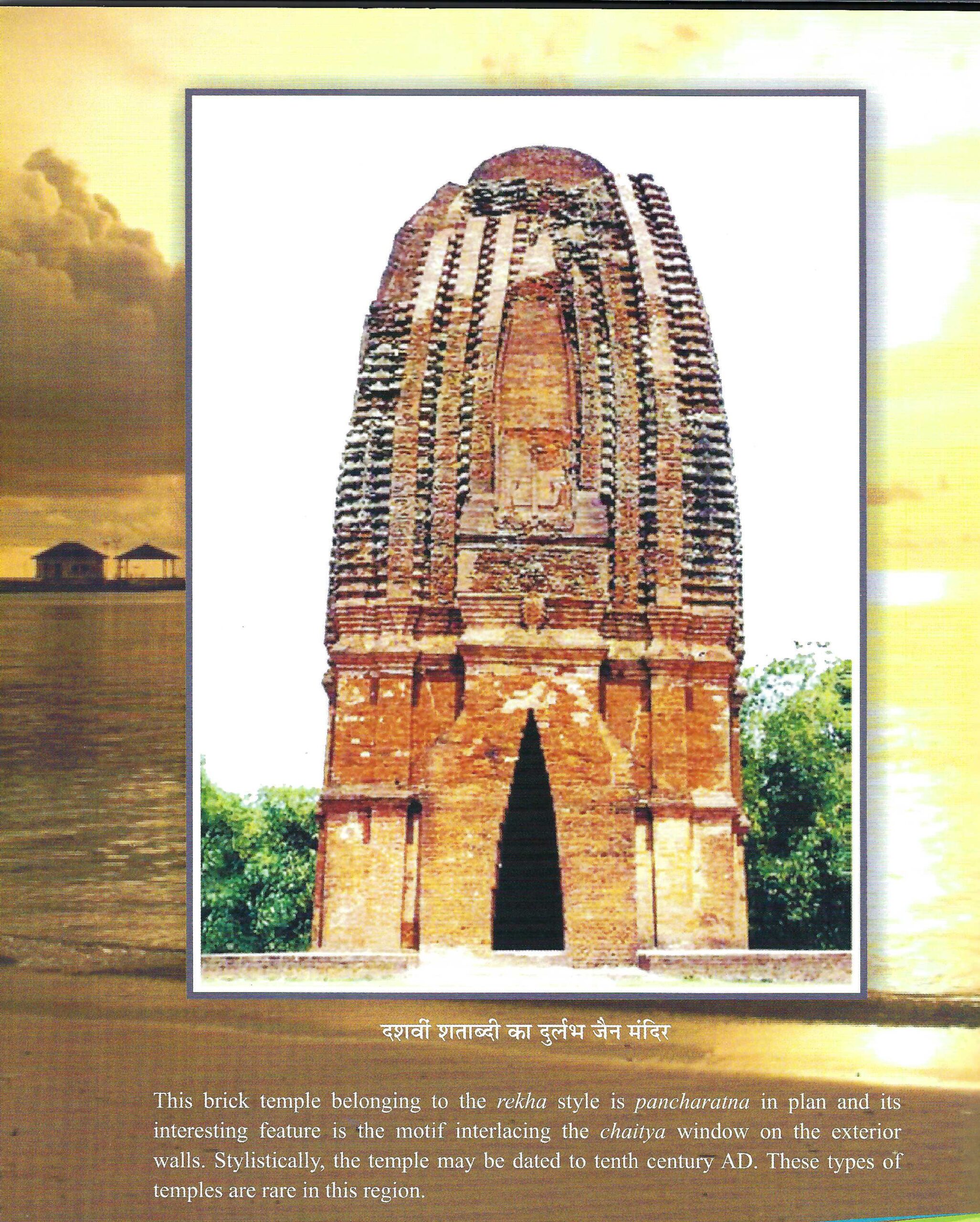 In the Ancient time, Bengal was the castle of Jain religion. According to the historians, a race named Bong from the Indus valley settled here around 4000 years ago. Engraved rocks, seals and statues collected from Harappa and Mohenjo-Daro, prominently indicate the existence of Sraman culture. According to Eminent scholars like Rai Bahadur Rama Prasad Chanda, Dr. Radha Kumud Mukherjee, Prof. Prannath Vidyalankar and others, the dominance of Jain religion was evident in the Indus valley civilization. The famous historian Dr. M.L. Sharma, categorically described that the “symbol engraved on the seals [mohar] uncovered/unearthed during Mohenjo-Daro excavation is of Bhagwan Rishavdev. This symbol signifies that even five thousand years ago the practice of Yoga was in vogue in India and its founder was the Adi Tirthankar, Rishavdev. The natives of Indus Valley used to worship Rishavdev along with other Tirthankaras.”
In the Ancient time, Bengal was the castle of Jain religion. According to the historians, a race named Bong from the Indus valley settled here around 4000 years ago. Engraved rocks, seals and statues collected from Harappa and Mohenjo-Daro, prominently indicate the existence of Sraman culture. According to Eminent scholars like Rai Bahadur Rama Prasad Chanda, Dr. Radha Kumud Mukherjee, Prof. Prannath Vidyalankar and others, the dominance of Jain religion was evident in the Indus valley civilization. The famous historian Dr. M.L. Sharma, categorically described that the “symbol engraved on the seals [mohar] uncovered/unearthed during Mohenjo-Daro excavation is of Bhagwan Rishavdev. This symbol signifies that even five thousand years ago the practice of Yoga was in vogue in India and its founder was the Adi Tirthankar, Rishavdev. The natives of Indus Valley used to worship Rishavdev along with other Tirthankaras.”
Sri Hari Prasad Tiwari and Sri Narsingh prasad Tiwari mentioned in their research work, “The head of the statue of a mother Goddess discovered in a village situated at the northern bank of the Ajay river, near today’s Jamgram, specifically establishes the existence and arrival of the inhabitants of Indus Valley in the region”. The head of the mother-statue is still preserved by the writers. No arms, armament or weapons came in possession from the remaining of Indus valley.
It clearly indicates that the inhabitants were the lover of peace and non-violence. With the passing of time, they moved forward and settled in the eastern part of the bank of the river. Evidence has also been gathered regarding their settlement in Orissa region. They in different groups visited Orissa from Burdwan. The then ruler of Orissa met them and also urged them to settle at Vdaigiri. He properly arranged shelter for them. It is assumed that the caves and statues of Khandgiri and Vdaigiri were built by the artists from within these group of inhabitants.
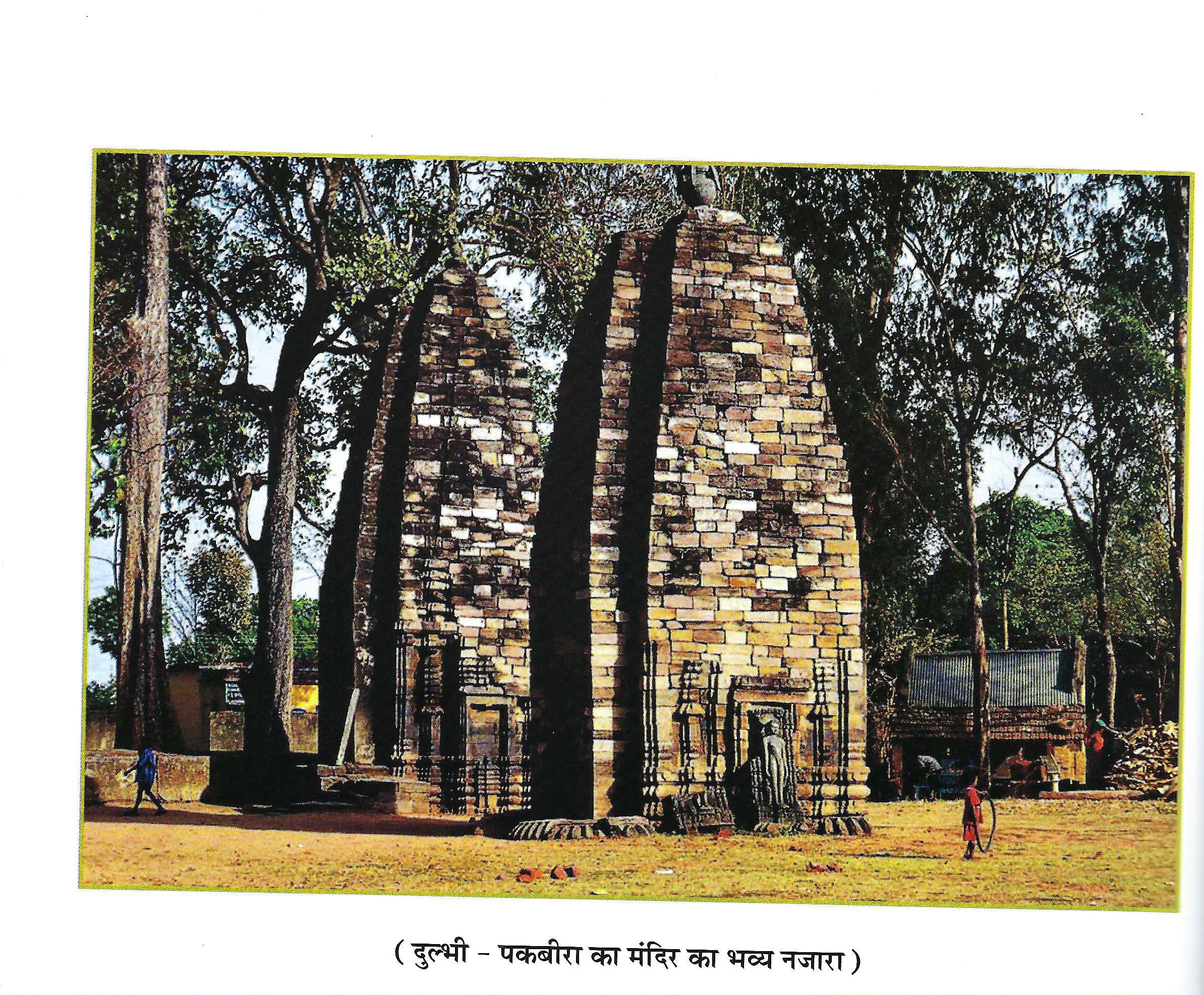 According to many scholars, the word ‘Bang’ was originated from the austric word ‘Banga’, which means Sun God. In each and every Ancient culture, Rishavdev was treated as God Sun and worshipped. Nilkantha Sahoo specially mentioned on this subject in the introduction, during the formal presentation of the book “Orissa Mein Jain Dharma”. He Propagated Rishav Culture from Orissa to Babylon, expressing the meaning of Rishav as Sun. Most of the linguistic scholars are at one with this view point that `Bang’ word was originated from the Tibetan word ‘Bun’. We get to know more about the arrival of the Tibetans here. One of the tributaries of the River Ganga is ‘Bhagirath’ this fact also gives its confirmation. As per the Jain literature, Rishavdev awarded different states to his hundred sons, before his consecration. Till now, we call in mind the names of his great sons while naming regions like Anga, Banga, Kalinga. As a consequence of this fact, we are introduced to such an ancient community in Bengal, today who are better known as Sarak. A great many research works have been done on them and that is still going on. It is assumed that having a community or caste, clan, etc. is done traditionally according to the name of its ancestors. The clan of these people of Sarak community is based on the names of the Tirthankars. Among these Tirthankars, Rishavdev is the most prominent. Thus, it can be taken into granted without any hesitation that at present, Acharya Suyash Muni Maharaj ji of the Sarak community’s clan is based on the name of Tirthankara Rishavdev. Ancestor of the Sarak people was either Rishavdev or a person closer to him, with whom they had blood relation. We can’t ignore this argument at all. Generally, the people of Sarak community were advanced and expert in metallurgy. They developed the art of work using copper. Copper mines of Singh Bhum area confirms the fact mentioned above. According to the European scholar, Mr. Bal and Mr. Ticket “The more adventurous Saraks have alone penetrated the jungles where they were rewarded with the discovery of copper.”
According to many scholars, the word ‘Bang’ was originated from the austric word ‘Banga’, which means Sun God. In each and every Ancient culture, Rishavdev was treated as God Sun and worshipped. Nilkantha Sahoo specially mentioned on this subject in the introduction, during the formal presentation of the book “Orissa Mein Jain Dharma”. He Propagated Rishav Culture from Orissa to Babylon, expressing the meaning of Rishav as Sun. Most of the linguistic scholars are at one with this view point that `Bang’ word was originated from the Tibetan word ‘Bun’. We get to know more about the arrival of the Tibetans here. One of the tributaries of the River Ganga is ‘Bhagirath’ this fact also gives its confirmation. As per the Jain literature, Rishavdev awarded different states to his hundred sons, before his consecration. Till now, we call in mind the names of his great sons while naming regions like Anga, Banga, Kalinga. As a consequence of this fact, we are introduced to such an ancient community in Bengal, today who are better known as Sarak. A great many research works have been done on them and that is still going on. It is assumed that having a community or caste, clan, etc. is done traditionally according to the name of its ancestors. The clan of these people of Sarak community is based on the names of the Tirthankars. Among these Tirthankars, Rishavdev is the most prominent. Thus, it can be taken into granted without any hesitation that at present, Acharya Suyash Muni Maharaj ji of the Sarak community’s clan is based on the name of Tirthankara Rishavdev. Ancestor of the Sarak people was either Rishavdev or a person closer to him, with whom they had blood relation. We can’t ignore this argument at all. Generally, the people of Sarak community were advanced and expert in metallurgy. They developed the art of work using copper. Copper mines of Singh Bhum area confirms the fact mentioned above. According to the European scholar, Mr. Bal and Mr. Ticket “The more adventurous Saraks have alone penetrated the jungles where they were rewarded with the discovery of copper.”
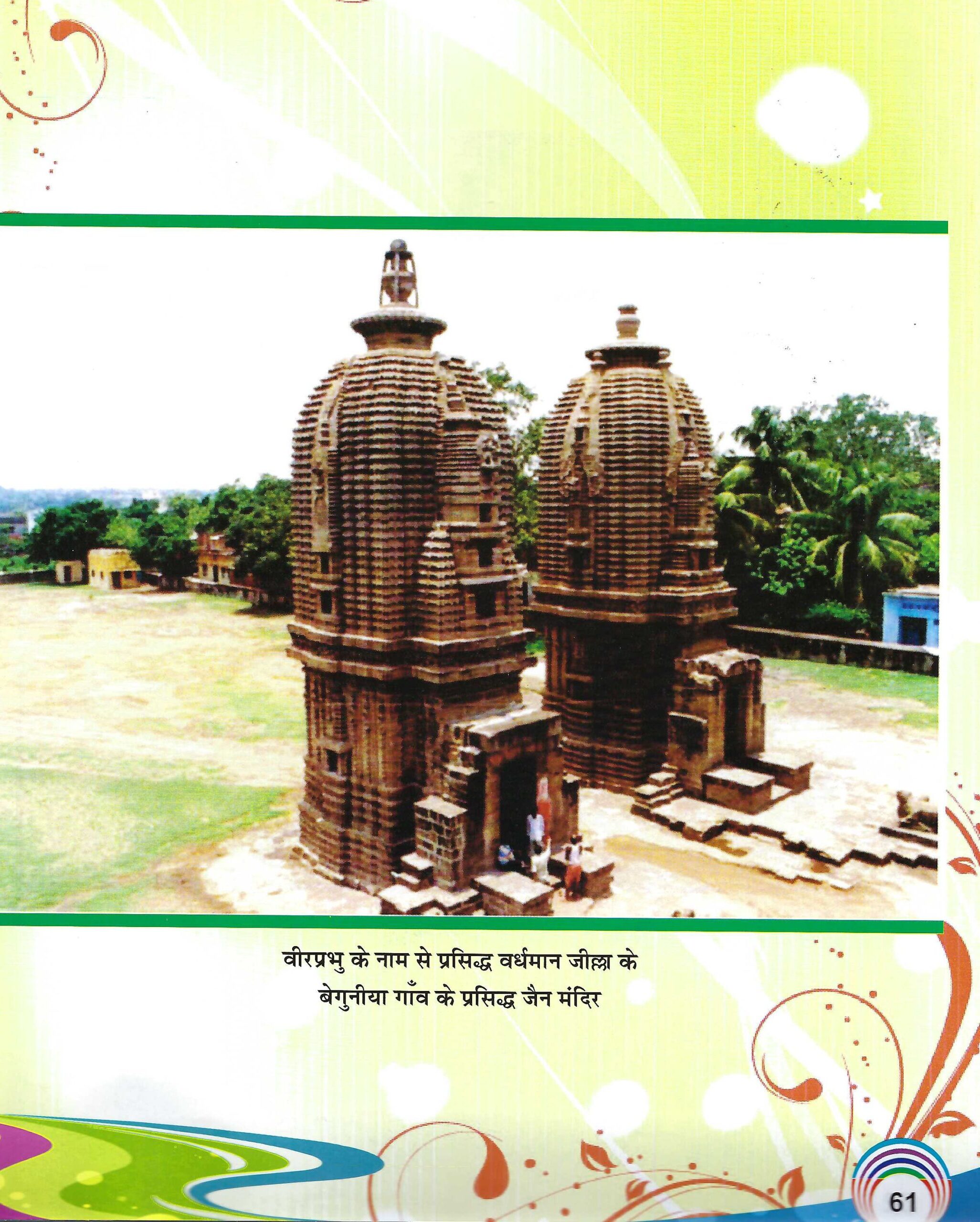 The Saraks were not only the founder of the Copper Age, but also the inventor of the Iron Age in the Eastern Parts. They also refined and exported iron in huge quantities following the scientific methods in the Rhar region. Centralizing the Jain Village, they were engaged in iron works covering a length of 30 miles distance from Roopnarayanpur to Pandeswara on the bank of the Ajay river. Huge quantity of iron dust (lakhs of tones) piled in a heap and broken down remains of the furnaces of melting iron ores in the region, gives the evidence of their skill in iron industry. The ancient temples and the statues built by the Saraks in Chachara, Para, Telkupi, Pakvirrah, Deulghat, Buddhapur, Banda, Sanka, Choliyama, Dalma, Pavanpur and other places gives the evidence of their ability and skill in art of work with idols and statues. With the passage of time, they turned experts of Tant clothes. They were not engaged in weaving coarse or cotton clothes. They only weaved clothes made of jute and rope of churn. The then people belonging to the higher class of the society were used to wearing clothes of jute and tasar. In other words, it can be said that the saraks were keen in the art of Tant, Statue making, and in mining of copper and iron etc. It is elaborated in Kalp Sutra that Rishavdev taught 72 kinds of art to men, 64 kinds of art to women and 100 kinds of different artistry work to his countrymen. He founded a group of artists after training them. So, who are these people, the Saraks of present age? In this way, Rishavdev helped the human beings to convert to the Metal Age from the Aboriginal and thus a developing civilization came into being through the path shown by this founder of Age.
The Saraks were not only the founder of the Copper Age, but also the inventor of the Iron Age in the Eastern Parts. They also refined and exported iron in huge quantities following the scientific methods in the Rhar region. Centralizing the Jain Village, they were engaged in iron works covering a length of 30 miles distance from Roopnarayanpur to Pandeswara on the bank of the Ajay river. Huge quantity of iron dust (lakhs of tones) piled in a heap and broken down remains of the furnaces of melting iron ores in the region, gives the evidence of their skill in iron industry. The ancient temples and the statues built by the Saraks in Chachara, Para, Telkupi, Pakvirrah, Deulghat, Buddhapur, Banda, Sanka, Choliyama, Dalma, Pavanpur and other places gives the evidence of their ability and skill in art of work with idols and statues. With the passage of time, they turned experts of Tant clothes. They were not engaged in weaving coarse or cotton clothes. They only weaved clothes made of jute and rope of churn. The then people belonging to the higher class of the society were used to wearing clothes of jute and tasar. In other words, it can be said that the saraks were keen in the art of Tant, Statue making, and in mining of copper and iron etc. It is elaborated in Kalp Sutra that Rishavdev taught 72 kinds of art to men, 64 kinds of art to women and 100 kinds of different artistry work to his countrymen. He founded a group of artists after training them. So, who are these people, the Saraks of present age? In this way, Rishavdev helped the human beings to convert to the Metal Age from the Aboriginal and thus a developing civilization came into being through the path shown by this founder of Age.
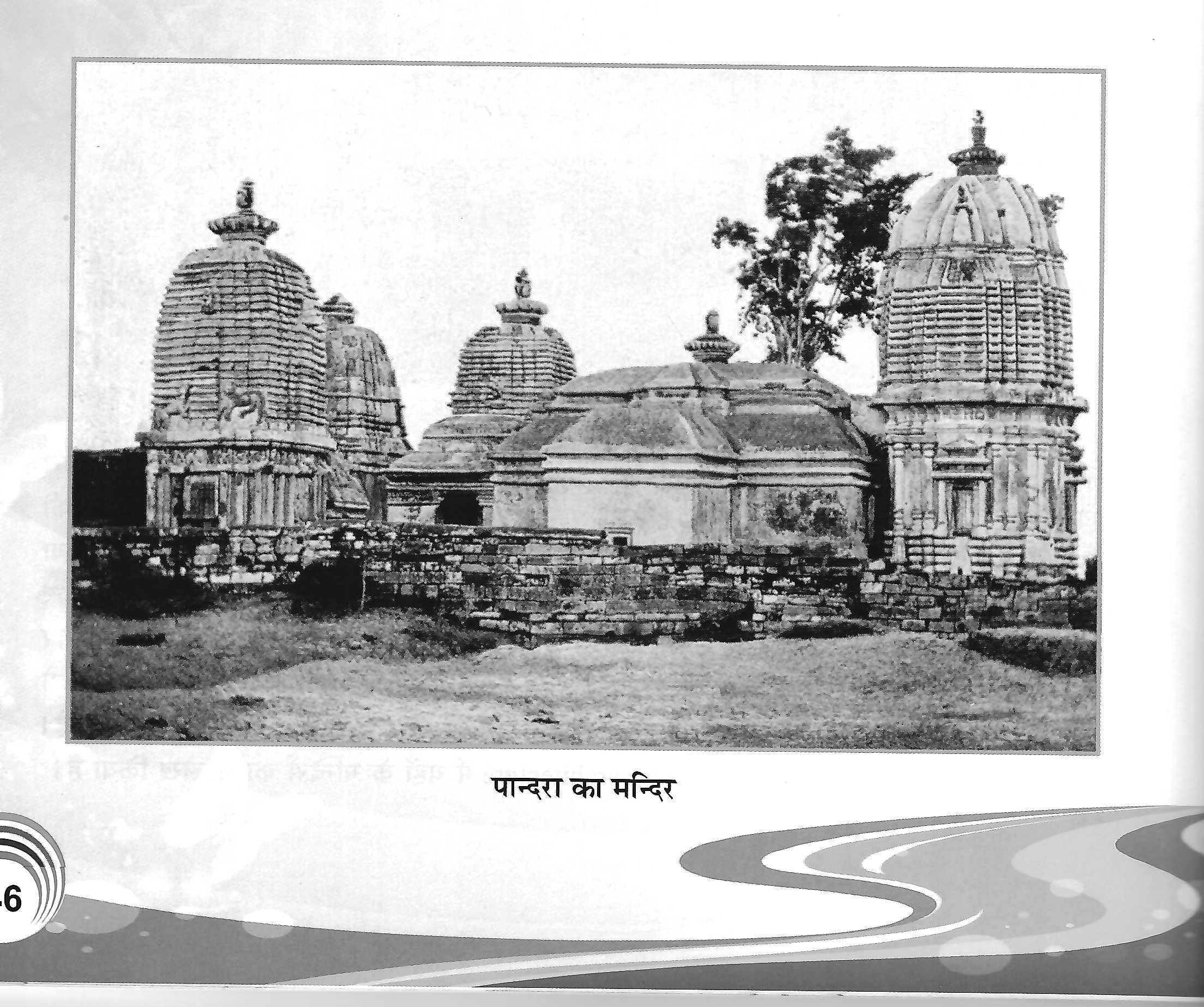 The development of each and every country or state depends on its artistic group. Only the metal resources of Bengal and Bihar established strong and powerful empires in India starting from the prehistoric age. The civilization started in India since the commencement of Metal Age, which gradually resulted in its extension of wealth, fame and power. 2600 years back, Bhagwan Mahaveer spent six years in this region of Bengal, and he preferred this region for his austerity and devotional activities. There are lots of evidences of all these things in the Jain literature.
The development of each and every country or state depends on its artistic group. Only the metal resources of Bengal and Bihar established strong and powerful empires in India starting from the prehistoric age. The civilization started in India since the commencement of Metal Age, which gradually resulted in its extension of wealth, fame and power. 2600 years back, Bhagwan Mahaveer spent six years in this region of Bengal, and he preferred this region for his austerity and devotional activities. There are lots of evidences of all these things in the Jain literature.
 Many important and golden memorable incidents of Mahavira’s life took place in the auspicious land of Banga. In fact, starting from Rishavdev to Bhagwan Mahavira and their disciples sacrificed and contributed a lot for making the people of this region cultured and civilized. Burdwan and Birbhum districts are named after Bhagwan Mahavir. R.G. Bhandarkar, the doyer of Indian Indologists, was of the opinion that Bengal was brought within the Aryan fold as a result of the Proselytizing activities of Mahavira, the last Tirthankara of Jainism and other Jaina.
Many important and golden memorable incidents of Mahavira’s life took place in the auspicious land of Banga. In fact, starting from Rishavdev to Bhagwan Mahavira and their disciples sacrificed and contributed a lot for making the people of this region cultured and civilized. Burdwan and Birbhum districts are named after Bhagwan Mahavir. R.G. Bhandarkar, the doyer of Indian Indologists, was of the opinion that Bengal was brought within the Aryan fold as a result of the Proselytizing activities of Mahavira, the last Tirthankara of Jainism and other Jaina.
Subsequently, the Jain followers were tortured in Bengal. As a result, this influenced not only the Kshatriyas, but also hampered the lives and livelihood of the so-called artists. This made the artists of Bengal settle in Gujarat. In other words, those who were great patron of clothes-designing, settled in Gujarat and ultimately, they provided glory and fame in Gujarat in this field.
From 30th December to 4th January 2008, I travelled in the Sarak regions of Purulia district situated in Bengal. There I visited a cave at Panchakot. This cave is left unsecured at the height of 300 ft. in a hilly region and it is about 3000 years old. We searched for its route to move at its top and at last we got the way to move forward. Those who discovered the cave, were with us. Tirthankara statue is inscribed inside the cave. Just 1500 ft. above, another cave came into sight but its entrance door could not be opened completely. Apart from this cave, ancient statues and remaining’s of the temples of 2000-2500 years back were found in the open space. These were all made in the sarak style. Both the statues, Bhairavnath of Telkupi and Mahakal Bhairav of Pakvira, are the statues of Bardman Mahavir. Mr. Datton said that these statues belonged in 500-600 B.C. Mr. Dalton placed them in the district as far back as five hundred or six hundred years Before Christ, identifying the colossal image now worshipped at pakbirra under the name of Bhairain. Whatever I have studied or understood has influenced me to visit the place. But I was totally surprised after having a glimpse of the finest ancient sculpture of this region. The Saraks built large number of ancient temples and statues in the regions of Purulia, Bankura, Mannbhum, Singbhum and this was really out of our imagination. These are all our ancient assets which are still getting neglected. The culture and civilization of Ancient India was ruined a lot and still the condition is deteriorating. I was shocked and spellbound to see that a very ancient historical art of Sarak is buried under the soil of the southern Rhar region. Nobody has paid attention towards it. Not only our Government Machinery, but also the whole Jain society is responsible for this, similarly, at the bank of River Ajay, few ancient stupas are lying unattended, and they are in very poor condition. According to the Archeologist, P.C. Dasgupta, it was built during the reign of Mahavir or much before it, during the Vratya Age. Till date these are discarded and neglected. There is an article published in the ‘Times of India’ dated 3rd June 1997, under the column ‘Lost City of the Jainas,’ that describes about a village named Puchra, 20 kilometers away from Asansol. Puchra means five shrines i.e. Five Temples. It is mentioned in its history that “Twenty kilometers from Asansol, a humpy road takes you to Punchra, a forgotten part of history where time has stood still for centuries. There are 50 families here with a shared past like no one else in the country. This is the only abode of the Bengali Jains. Jains at first glance, the limples, the ‘deities’, and the numerous carved stones lay scattered in the dense undergrowth.
Most of the Jain families of Puchra lead a life of abstinence. They don’t even eat onions, potatoes and masur dal.
The families call themselves `Saraks’ (a distortion of the word `Shravak’), or the Adi Jains. Arun Majhi, priest of the local Jain temple, believes that Lord Mahavira attained enlightenment on the banks of the nearby Ajoy river. Those who came in touch with him were called `Shravaks’. He claims that the ruins of an entire city dating back 1,400 years lie buried under the village.
Similarly, remaining’s of the Mauryan empire have been gathered from different parts of Bengal. These remaining’s illustrate that the Adi Dharma of Bengal was Jainism. Moreover, it also denotes that its founder was Rishavdev. The Adina Mosque of Gaur Malda was actually the Ancient Temple of Adinath Rishavdev.
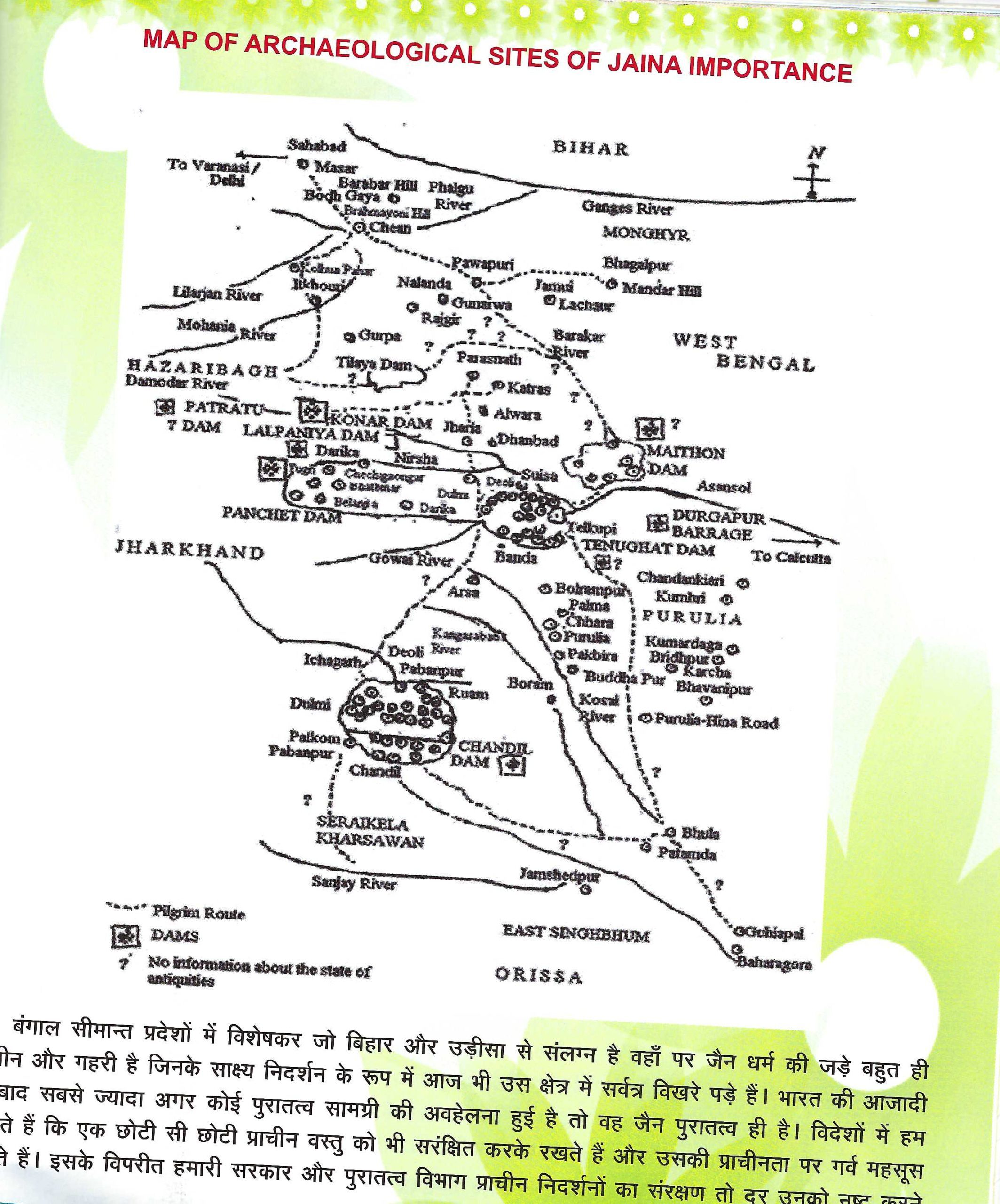 We come to know from few traditional descriptions and folk tales that the main disciple of Bhagwan Mahavir, Pattadhar Sudharmaswami and his disciple, Jambuswami attained salvation at Kotpur. A stupa has been built in their memory. Today Kotpur is named as ‘Devikot’, which is also known as Gangarampur region of South Dinajpur district in West Bengal. After the completion of thorough research studies, the eminent historian, Prof. Chittaranjan Pal has written on this matter elaborately. Legends embedded in Divyavadana and Asokavadana reveal that from the days of Gautam Buddha to the days of king Asoka, Pundravardhana was mostly dominated by the Jainas. On the other hand, another old tradition reveals that there were two very ancient Jaina holy places at Pundravardhana, one at Pundraparvata and the other at Kottapura, later known as Devakotta. Kottapure/Koti Tirtha was considered to be the most holy place because here mahamuni Jambuswami attained nirvana and cast his mortal body. All classes of Jainas, whether monks or ley devotees, used to come to Kottapura/Koti Tirtha to worship the monument or the mausoleum of the great saint from far and near.(Chitta Ranjan Pal)
We come to know from few traditional descriptions and folk tales that the main disciple of Bhagwan Mahavir, Pattadhar Sudharmaswami and his disciple, Jambuswami attained salvation at Kotpur. A stupa has been built in their memory. Today Kotpur is named as ‘Devikot’, which is also known as Gangarampur region of South Dinajpur district in West Bengal. After the completion of thorough research studies, the eminent historian, Prof. Chittaranjan Pal has written on this matter elaborately. Legends embedded in Divyavadana and Asokavadana reveal that from the days of Gautam Buddha to the days of king Asoka, Pundravardhana was mostly dominated by the Jainas. On the other hand, another old tradition reveals that there were two very ancient Jaina holy places at Pundravardhana, one at Pundraparvata and the other at Kottapura, later known as Devakotta. Kottapure/Koti Tirtha was considered to be the most holy place because here mahamuni Jambuswami attained nirvana and cast his mortal body. All classes of Jainas, whether monks or ley devotees, used to come to Kottapura/Koti Tirtha to worship the monument or the mausoleum of the great saint from far and near.(Chitta Ranjan Pal)
The last Shrut Kevli Bhadrabahu belonged to this region. Godas was his disciple. The four branches of the disciples of Godas had special attachment with Bengal. These four branches are Tamralipta in Tamluk city, Vangarh near Kali, Dinajpur, Mahasthangarh in Vagura Dasi Kharvatiya Medinipore. Few scholars relate it with Komila. All these branches are related to Bengal.
The Greek scholar Megasthenis mentioned about the powerful empire of Bengal in his book ‘Indica’. According to him, Sikander was frightened from not only the Army of Magadh, but also the vast powerful Bengal soldiers. The Greek historians suggest that Alexander retreated fearing valiant attacks of the mighty Gangaridai and Praioi empires which were located in the Bengal region. Alexander’s Historians refer to Gangaridai as people who lived in the lower Ganges and its tributaries. He describes Gangaridai as a nation beyond the Ganges, whose king had four thousand war trained and equipped elephants. Later Periplus and Ptolemy also indicate that Bengal was organized into a powerful kingdom at the onset of the first millennium AD.
A Jina statue of Mauryan dynasty was found at Chandraketugarh of 24 paraganas, 38 kilometers away from Kolkata. Sri Gauri Shankar Dey emphatically said that there is a similarity between the statue of Chandraketugarh and the statue of Lohanipur of Mauryan Dynasty. Both the literary and archeological evidences indicate that Bengal had an early association with Jainism. Jainism flourished in Bengal long before the Christian era and continued in its full form at least up to the 7th century A.D. yet, in this connection, the torso of a Tirthankara found in the ruins of Chandraketugarh, a well-known archeological site of West Bengal, deserves special mention. It has the closest resemblance with the Lohanipur Torso, representing the oldest Jaina image extent in Bengal. It is described in the Jaina literature that king Kiraat of Kotivarsha of Bengal visited Bhagwan Mahavir and was initiated. The famous historian Tolmi also mentioned about the people of Kiraat. He denoted the Kiraat people as the most ancient evenly settled community of Bengal. They were also large in number. There is a temple of Kiraatbagh and Dadabari at Jiyagunj of Murshidabad in Bengal. This was initially situated at Ajimgunj. Due to the flow of water of Ganga, a part of it drowned into the water and the rest part headed towards Jiyagunj. Till date, it is known as the Temple of Kiraatbagh, to maintain its old identity. Similarly, in the descriptions of the royal family of Kadi, the earlier name of Ajimgunj was Jineshwar Dihi which was popular as a pilgrimage spot. In this region, Kiriteshwar is situated near Ajimgunj. Dahapara is located at the western bank of Bhagirathi, in the opposite direction of the Murshidabad city. In the ancient times, this city was decorated with many palaces. Moreover, this was under the capital city of Murshidabad. A village named Kiritkonn is located 14 miles away in the western direction from here, which was in Tirathkonn. In this way, Karna Suvarna was pronounced as Kana Sona, and Kiritkonn as Tirathkonn. Today, vast forest and remains of many ancient temples are found here. This symbolizes the ancient fame, pride and golden memory of Kiraat people. Two more temples were built near the main temple where Tirthankar statue is worshipped as Bhairav. The name of the God Kiriteswar has been written as Vimaladevi in the ‘Tantra Churamaini Pith Nirnay’. Actually, this temple was not of Vimaladevi, but it was the temple of the 13th Tirthankara, Vimalnath. The meaning of kiri is Varha, which is the blemish of Tirthankara Sri Vimalnath Swami. The temple remained unaffected till Gupta Period. The main sculpture of the temple was destroyed after the increase of superiority of the Brahmanas. Gradually, during the reign of Sasanka in the 7th century, the Jains had to retreat from this region. At that time, this holy spot came under the direct control of the Brahmanas. The Jain idols are worshipped in the form of Goddesses and Bhairav in different parts of Bengal till today.
The idols made of expensive metals, gems and stones of 9th and 10th century collected from Katwa, Ujani and some other places of Burdwan district have been preserved in Ashutosh Museum and Bangiya Sahitya Parished museum. All these things give a strong proof that there was a vast impact of Jainism in the Burdwan district. The Burdwan district was named after Tirthankara Bardhman Mahavir. Sri Vinay Ghosh has approved this fact in his book ‘Paschim Bangal Sanskrit’
Dr. Kalidas Nag has categorically described this in ‘Discovery of India’. Many great Ancient Jain Temples were found in the western part of Bengal. Also, this religion developed manifold in the Sunderbans areas of 24 paraganas. A good number of beautiful Jain mementos and idols made of copper were also found to be present in Nalgoda and Kantabenia regions in the bag and parasol areas of the vast dense forests of the Sundarbans. Apart from all these, there are Jaina idols in the private museum of Sri Kalidas Dutta of Majilpur and Ashutosh Museum, which emphasis the fact that along with Buddhism and Brahminism, Jainism played a vital role in the populated places of the Sundarbans.
Truly, it is unfortune that there are thousands of idols placed unsecured in the debris or under the trees. Many of them were taken to the foreign countries, and few of them are worshipped by the local villagers as their Gods and Goddesses. In some places, the Jain idols are worshipped as Lord Shiva or Bhairavnath, and in few other places, they are regarded as the idol of Devi Manasa. Bhairavnath is regarded as a famous God of Telkupi. It is in fact Bhagwan Mahavir. In this way, gradually the Jain idols and temples were converted into a part of Hindu culture here. But still the un-erased impact of Jainism can be seen here in the language of common people and in their lifestyles and customs.
In Bengali language, there are so many words which have the similarity with the words used in Jaina language, for instance, the village is called ‘palli’ among the Jainas. In Bengal, villages are still called ‘Palli’. Similarly, the upper or the outer garment of the Jaina monks is known as ‘Pacheri’, and in Bengal also, it is known as ‘Pacheri’. The Jain monks use a typical broomstick to brush or clean which is popularly known as ‘Pichi’. The broomstick in Bengal is also called ‘Pichi’. The ancient Bengali language originated from Ardhamagadhi. A prominent impact of Jainism can be noticed in the poems of Bengal like Mansamangal, Chandimangal, Dharmamangal etc. Snake Goddess Manasa Devi is the ruling Goddess Padmavati, worshipped during the reign of Bhagwan Parswanath. The tall tale of Behula in Mansa Mangal reminds us of the character Sri Pal Charitra in Kathanak. According to Jyotindranath Chattopadhyay, Minanath from Bengal belonged to the Nath community. Adinath i.e. Rishavnath was the Guru of Maninath. Jain Ramayana is found to have similar feature with the Bangal Ramayana.
A Buddha Vihar has been discovered at Paharpur of Rajshahi district in Bangladesh. After excavation, various articles belonging to the Jain culture have been traced. As a result, a great many examples of Jain culture have been found after excavation, which definitely proves that it was one of the pilgrimages of Jainas in ancient times. Later, it converted into sompur Buddha Vihar. There are twenty different Jain Stupas. The famous Buddhist scholar, Dipankar Atish, was the main priest of Sompur Vihar, who went to Tibet from Bengal for the propagation of Buddhism. An article of Tamrapatra of the Gupta Period has been traced from this Paharpur. It gives us first-hand knowledge of the fact that a couple gifted land to a Jaina Sraman Guhanand for the construction of an abbey named Bat Gohali. We get detailed description of Jambudev in the article. It also denotes the placements of temples and stupas related to Jambuswami. It is said that during the reign of IInd ruler Maharaj Dharmapal of the Pala Dynasty, this Vihar was popularly known as Maha Buddha Vihar of Sompur. But according to the Prabhandh Koshy, Gaur was the capital of Bengal and Dharma was the ruler of Lakshmanavati city of Gaur. King Dharma loved and respected Jain Acharya Pappabhatti for his profound knowledge. Kaviraj Vakpati was also a man of qualities, in his court. Kalhan has also described the details in his book, “History of Kashmir”. Acharya Bappabhatt Suri was very influential Jain Acharya in his contemporary times. His religious activities were not only confined in a particular region, but also in various directions. He brought back to life the ancient stupas of Mathura. The ruler of Kannauj, Aam was deeply influenced by him and wanted him to stay with him. But Bappabhatt Suri left the place and reached Bengal and upon Dharmapal’s intent desire, he settled there. He achieved the title of ‘Vadikunjarkesri’ by defeating the Buddhist scholar in a debate. Many important incidents took place in his life. Moreover, we get a detailed report of his biography from the history of Kashmir, during the reign of King Lalitaditya Muktapith

We get the description of Jina temples built by emperor Lalitaditya, which shows the influence of B. B. Suri, on the king. It is thoroughly and evidently revealed in ‘Rajtarangini’ about the emperor Latitaditya, “The king who was free from passions built the ever-rich Raj Vihara with a large quadrangle, a large chaitya and a large image of the Jina”.

A detailed description of Acharya Bappabhatt Suriji in his courtyard and the narration of the Jina idols and images is a matter of thorough research.
Among the Bengali scholars, in the 11th century, a writer named ‘Advay Braj’ of Vajrayan Branch was famous as ‘Avadhuti Pa’ in Tibet. A poem containing twenty slokas popularly known as ‘Mayaniryukti’ composed by him was obtained. The writer lived at Devikot of Northern Bengal. This region is considered as the Ancient Pilgrimage Kotapur. Prof. H.P. Shastri mentioned about an ascetic in the translated work of ‘Mayaniryukti’. He wrote that a true ascetic is the one who leads his life with tough religious austerity and sacrifice. Advay Braj was from Sompur of Bihar which initially was a Jain Vihar. It seems that while composing the poem, he had a clear conception of the principles and religious vows of Shramanas. Prof. Chitta Ranjan Pal elaborated the following comments on this. So, we may conclude without hesitation that Advayavajra in depiction the characteristics of true Yoginis or ascetics had before him the portrait of the ‘Jinakalpi’ or advanced life and who were, perhaps, very numerous at ‘Devakota/Devikota’ at Kotivarsa Visaya in the bhukti of Pundravandhana, during the 11th centuries.
Till date the exploration of the history of Jainism is not enough because in the Indian history, the historic elements related to Jainism is underestimated. In other words, it is paid less importance than any other religious components. The modern historians either concealed or changed the accounts of many republican rulers, Jain commanders or people drowned in Jaina thoughts and culture. Dr. D.C. Sen elaborated more about Bengal in his book ‘Brihatbang’. The Brahmin were responsible for wiping out Jainism from Bengal. Jain temples were converted into Hindu temples and even some of the deities who were widely worshipped were given Hindu names and worshipped as Hindu Gods without acknowledgement of their Jaina origin. It took place not only in Bengal, but also in Assam, adjacent to Bengal, because least excavation activities have been conducted there.Only few evidences have been gathered from there. There are seven tonks of various signs on the surya mountain of Assam. So, the local people call it ‘Santhali’. Idols of two Tirthankaras were inscribed in a cave of Santhali or Surya Mountain. One of them is ‘Bhagwan Padmaprabhu’ while the other is the idol of ‘Bhagwan Rishavdev’ or ‘Bhagwan Shantinath’. In another cave near this, there is a Goddess of twelve hands along with other Gods and Goddesses. Most probably this idol is of the ruling God Devi Chakreshwari, worshipped by Rishavdev. More and more evidences of Jaina archeology can be achieved from this place after extensive research work and excavation.
About Author
She has completed her M. A in Pol. Science, Ph.D.in Jainology and D.Lit. in Bengal Ke Jain Puratatva. She is an Editor for Titthayara (monthly), Jain journal (quarterly). She writes Creative Writings, edits books, articles, and is a PhD guide. She has done few Documentary video films as well and holds Jain Chair in All India Institute of Oriental Heritage.
co-edited by Pratima Dinesh Vora

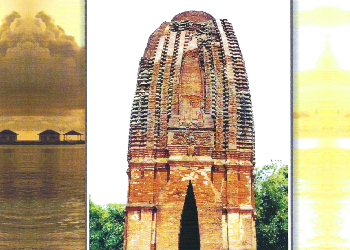
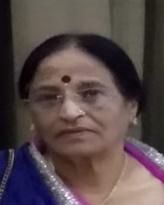
It’s a good experience to know about our glorious past in Bengal, also the Sarak, Sahu and other community from old Magadh region. Thanks to author and editor for this article on history of Jainism.